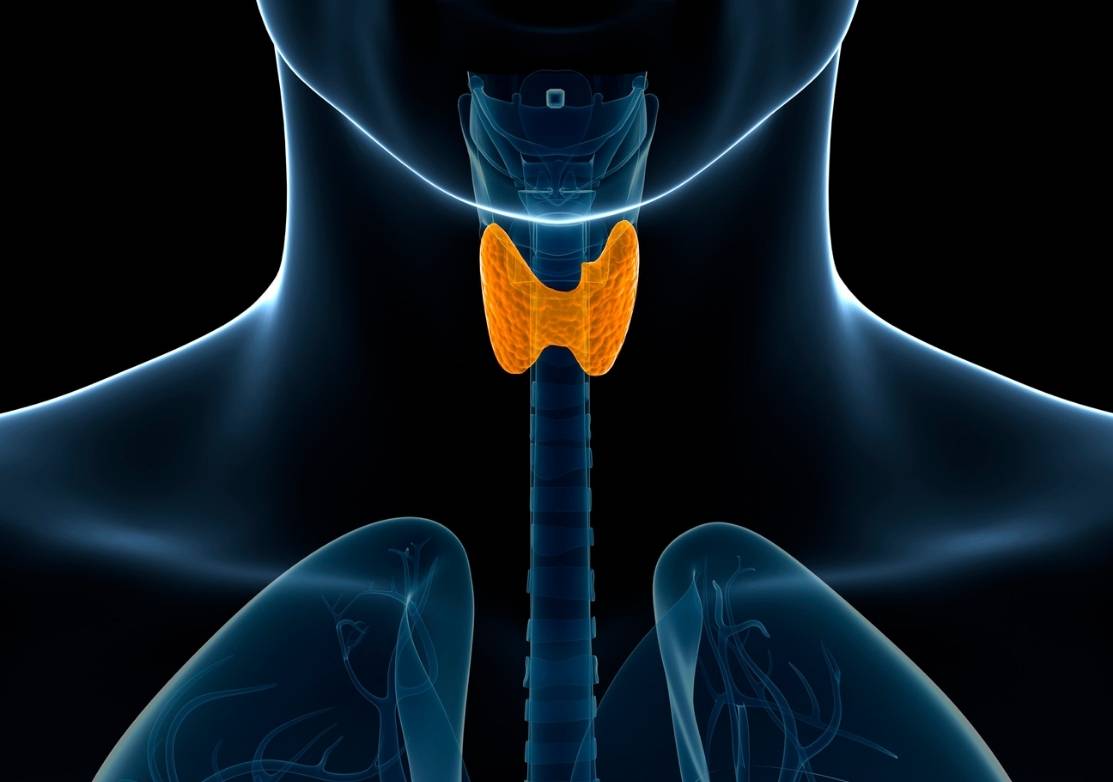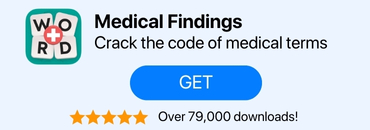You will be able to learn some of the most common word roots and combining forms that are used in referring to the endocrine system when you take this quiz.
Quick Review for the Quiz
Check out the flashcard version for a more detailed review.
| Word Root | Combining Form | Body Part or Condition |
|---|---|---|
| aden | aden/o | gland |
| adren, adrenal | adren/o, adrenal/o |
adrenal gland or epinephrine
|
| adrenocortic | adrenocortic/o | adrenal cortex |
| calc | calc/i | calcium |
| endocrin | endocrin/o |
endocrine glands or system
|
| insul | insul/o | pancreatic islets |
| kal | kal/i | potassium |
| natr | natr/o | sodium |
| parathyr, parathyroid | parathyr/o, parathyroid/o | parathyroid gland |
| pituitar, hypophys | pituitar/o, hypophys/o |
pituitary gland (hypophysis)
|
| thyr, thyroid | thyr/o, thyroid/o | thyroid gland |
-
Question of
Find the combining form of the image highlighted.

-
aden/o
-
gland/o
-
adrenocortic/o
-
insul/o
Correct Wrong
aden/o is a combining form that refers to "gland". A gland is an organ that produces and releases substances (like hormones) for specific purposes. There are two types of glands: endocrine glands and exocrine glands.
-
-
Question of
Find the combining form of the image pointed to.

-
adren/o
-
aden/o
-
hypophys/o
-
parathyr/o
Correct Wrong
adren/o or adrenal/o is a combining form that refers to "adrenal gland" or "epinephrine". On top of the kidneys, adrenal glands are endocrine glands. The adrenal glands produce several key hormones, including cortisol, aldosterone, and adrenaline (epinephrine). Several bodily functions are regulated by these hormones, such as metabolism, blood pressure, and the stress response.
-
-
Question of
Find the combining form of the image pointed to.

-
adrenocortic/o
-
epicortic/o
-
natr/o
-
kal/i
Correct Wrong
adrenocortic/o is a combining form that refers to "adrenal cortex". The adrenal cortex is the outermost part of the adrenal gland that secretes hormones that are crucial to the functioning of your body. Among these hormones are cortisol (used to regulate metabolism and handle stress) and aldosterone (used to regulate blood pressure).
-
-
Question of
Find the combining form of the image highlighted.

-
calc/i
-
call/u
-
aden/o
-
kal/i
Correct Wrong
calc/i is a combining form that refers to "calcium". The mineral calcium is essential for the development of healthy bones and teeth. They also play an essential role in blood clotting, contraction of muscles, and the regulation of nerve impulses.
-
-
Question of
Find the combining form of the image highlighted.

-
endocrin/o
-
gland/o
-
endocrian/o
-
adrenal/o
Correct Wrong
endocrin/o is a combining form that refers to "endocrine glands or system". An endocrine gland releases hormones straight into the bloodstream and distributes them to tissues and organs throughout the body. The endocrine glands play a key role in controlling many body functions, including growth and development, metabolism, and fertility. Pituitary, thyroid, and adrenal glands are examples of endocrine glands.
-
-
Question of
Find the combining form of the image highlighted.

-
insul/o
-
islet/o
-
pancreatic/o
-
adrenocortic/o
Correct Wrong
insul/o is a combining form that refers to "pancreatic islets". A pancreatic islet, also known as an islet of Langerhans, is a cluster of cells in your pancreas. The pancreas produces hormones to help your body break down food. The pancreatic islets produce glucagon and insulin. Alpha cells in the pancreatic islets release the hormone glucagon in the body when blood glucose levels fall.
-
-
Question of
Find the combining form of the image highlighted.

-
kal/i
-
potass/i
-
calc/i
-
adrenocortic/o
Correct Wrong
kal/i is a combining form that refers to "potassium". Potassium is an extremely valuable mineral that is essential for all tissues in the body and can be found widely in many foods and as a food supplement. The primary function of this substance in the body is to help maintain the normal level of fluid within our cells. Its opposing mineral, sodium, ensures normal fluid levels outside the cell. Additionally, potassium supports blood pressure regulation and facilitates muscle contraction.
-
-
Question of
Find the combining form of the image highlighted.

-
natr/o
-
sodi/o
-
endocrin/o
-
calc/i
Correct Wrong
natr/o is a combining form that refers to "sodium". As an absolutely necessary nutrient, sodium is required by the body in small quantities ( as long as sweating is not excessive) to regulate fluid balance in the body and maintain normal function of muscles and nerves.
-
-
Question of
Find the combining form of the image highlighted.

-
parathyr/o
-
thyr/o
-
thyroid/o
-
pituitar/o
Correct Wrong
parathyr/o or parathyroid/o is a combining form that refers to "parathyroid gland". The parathyroid glands are situated behind the thyroid at the base of your neck, roughly the size of a rice grain. The parathyroid glands produce parathyroid hormone, which assists in maintaining a healthy balance of calcium in the bloodstream and in tissues that rely on calcium.
-
-
Question of
Find the combining form of the image pointed to.

-
hypophys/o
-
tuitari/o
-
aden/o
-
adrenal/o
Correct Wrong
pituitar/o or hypophys/o is a combining form that refers to "pituitary gland (hypophysis)". At the base of your brain, below your hypothalamus, lies the pituitary gland (also called hypophysis). Hypophysis or pituitary gland regulate growth, reproduction, metabolism, stress response, and lactation by relaying signals from the brain to peripheral organs.
-
-
Question of
Find the combining form of the image highlighted.

-
thyr/o
-
parathyroid/o
-
adren/o
-
hypophys/o
Correct Wrong
thyr/o or thyroid/o is a combining form that refers to "thyroid gland". Small, but powerful, the thyroid gland is an endocrine gland located in the neck. It secretes two hormones into the bloodstream: thyroxine (T4) and triiodothyronine (T3). These hormones are crucial for controlling the body's metabolic rate, the function of the heart, muscles, and digestive system, as well as the development of the brain and maintaining bone health.
-




